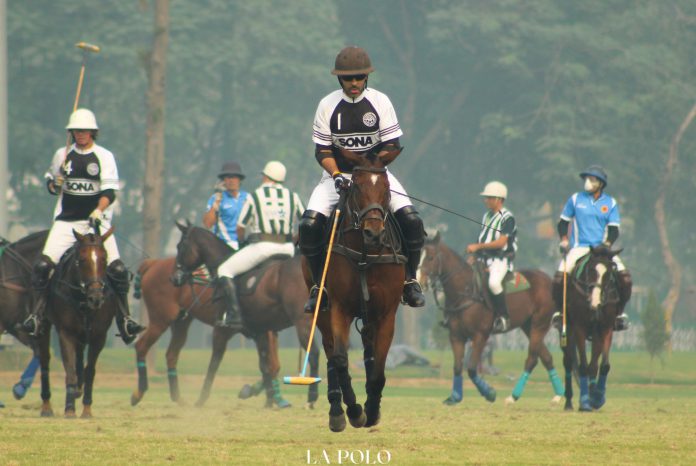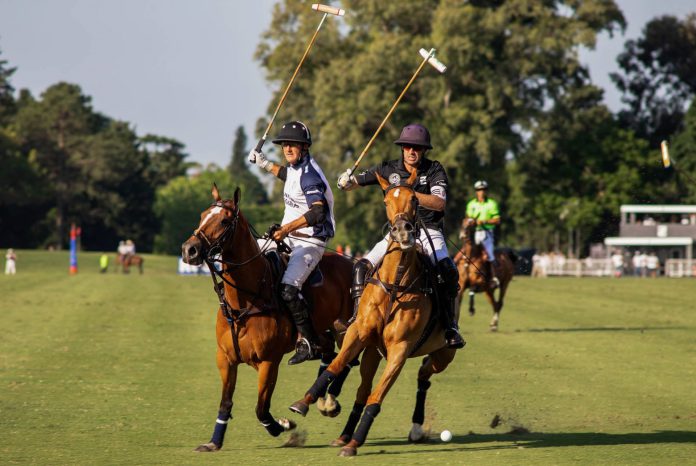COVID-19 outbreak has brought life as we have known it to a standstill in many ways, and Polo is no exception to that. Many tournaments of Polo witness either suspended or called off without prior notice during the crisis. Although, the life of polo and otherwise are coming back on the track slowly, and during these days, we at LA POLO choose to reflect on the changing pattern of Polo In this backdrop, we decided to get in touch with the players to find out their say about the changing patterns of the game. Elaborating on the modern form of polo that has adopted a lot more tapping and turning, as against the diamond shape play that ruled the sport from the 1970s to the 1990s.
UNDERSTANDING THE DIFFERENCE
To bring it all into perspective, the major difference between a diamond shape play and turning and tapping play is that the game in its older days was played in accordance to the diamond shape play, where a team would position in a manner, where they would mark, defend and hit keeping into consideration the diamond shape maintained on the ground. With the times changing and the game evolving, the discipline of the diamond shape and its positioning ritual kept on fading. In recent times, you hardly see that. The modern form of the sport is more akin to tapping and turning. While the young guns are in favour of the changing patterns, the older legends are not too sure about it.
Javier Tanoria , author of “Reflecting On Polo In Argentina”, in his article wrote: “Turning the ball is probably the most stigmatized play of polo.” He further wrote: “Ever since I was very young, I remember how our parents and polo educators berated my brother, my friends and myself when we made too much use of it, tell us (most reasonably) that it was much more profitable to hit a backhander.” Talking about the game of recent times, he was seen quoting in favour of turning the ball. He wrote: “Nowadays, it is more profitable to turn the ball than to hit a backhander, because however well you may hit a backhander, you will always risk losing possession of the ball, and by turning it you don’t.”
He added: “That is why it is increasingly rare to see a backhand stroke and we see more and more turning the ball.” During his study, Tanoria approached a former 10 -goal player who said: “Turning the ball must be forbidden. That would be the solution to everything."
With this, we reached out to players for their input.
TO BE IN FAVOUR OR NOT TO BE
To understand the changing pattern of the game, it was best to reach out to the payers who are or have been the part of the play in person, for, who better than the experienced can share the pros and the cons.
Talking elaboratively on the changing form of Polo, we had on board, Col (Retd) KS Garcha. As a young gum, Col Garcha recalled, "Today players are better equipped, but the play had been downgraded." Explaining his view he added: " At our tomes, we gopt horses rejected by our seniors, and we didn't even know what stick to choose from; we played, emulating our seniors as there were no professional coaches."
He further said, "Because most players came from the army, they were disciplined and everything worked in a fine measure." According to Col Garcha, in the 1970s and 1980s polo was played in a classic style which was called the "diamond formation" in which platers diverged from their goalpost towards the mid corner of the field and then converged to the opponent's goal post.
Contrary to it, the new avatar of polo is a slow game with a lot of tapping , the long shots and free galloping is reduced. Col Garcha remarked, "The fun of polo is gone."
Polo as compared to the earlier times has differed in many ways. Col RS Sodhi said, " One major difference I see was that our generation were better horsemen." Reflecting on the style of play, he remembered how he and his brother, Col HS Sodhi, both has a very distinct style of play. While Col HS Sodhi would strike long distance shots and was calmer, Col RS Sodhi could dribble better and created a whirlwind on the ground. Col RS Sodhi said: "The game used to be rough, and there was a lot of bumping and free galloping, I was good dribbler, but if you dribbled, they would come and hit you."
While the veterans of Indian Polo fraternity had a soft place for the discipline of diamond formation, the younger players have a diversion in the thought.
Dhruvpal Godara, +5 handicap polo player at this said; "I don't feel that polo has in anyways slowed down due to tapping and turning." Justifying his view, he said, "It is important to understand that as compared to the earlier times, the speed and the quality of horses have changed. The speed is faster and with this, the style of play ought to change."
Another polo player, Angad Kalaan, +3 handicap polo player sat with LA POLO to discuss about the change in pattern. From the diamond form to more of tapping and turning, Polo has seen rise of debatable thoughts on this. He said, " I think its the quality of horses and the game. The level of the skill has improved a great deal. It's not that we are not tapping and turning the ball, we are. But we are doing it at higher speeds. We have removed the danger out of the sport which was one could stop on the ball and turn which was causing a lot of accidents." Explaining, he further added, "So the rule has changed to void, where people are allowed to crash into one another which is benefit of the game. Today's game is fast. You can hit, you can pass, you can run, I mean you can do as you like, as long as you are not dangerous and you are not causing a foul."
The thought varies from generation to generation and would never come down to a conclusive call. If you have anything to share on the similar grounds, write us at info@lapolo.in





